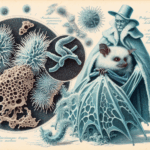The numbers are in, and they’re bleak. The 2025 U.S. State of the Birds report just dropped, confirming what scientists, conservationists, and any backyard birdwatcher with a functioning set of eyes already suspected—America’s bird populations are spiraling downward. Of the 1,100 or so bird species in the U.S., 229 are now on the conservation emergency list, including 42 species teetering on the edge of oblivion.
If this feels familiar, it’s because it is. The 2019 study that revealed North America had lost 3 billion birds over five decades was already alarming. Now, five years later, the numbers haven’t rebounded, and the losses are creeping into ecosystems that were once considered relatively stable. Even ducks—yes, the ducks—are in trouble.
It’s not just a bird problem. Declining bird populations are flashing neon warning signs about the health of our environment. When birds start disappearing, it means their habitats are degrading, food sources are collapsing, and the ripple effects aren’t far behind. As Amanda Rodewald from Cornell Lab of Ornithology bluntly puts it: if things aren’t good for birds, they’re probably not great for humans either.
Some of the hardest-hit species? Allen’s Hummingbird, Tricolored Blackbird, and Saltmarsh Sparrow. These aren’t just poetic names in a field guide; they’re real creatures, each playing a role in their ecosystems. Losing them isn’t just a tragedy for bird lovers—it’s a sign of systemic collapse.
But here’s something unexpected: bird conservation isn’t just a moral imperative; it’s also an economic powerhouse. The U.S. birding industry—yes, that’s a thing—is worth a staggering $279 billion. Nearly 100 million people engage in birdwatching, feeding, or related activities, supporting 1.4 million jobs in the process. Turns out, people really like birds, and they’re willing to spend serious cash on the experience.
Even as the report paints a dire picture, conservation groups remain cautiously hopeful. Jeff Walters from the American Ornithological Society emphasizes that public interest in birds has never been higher, and the data on their status has never been clearer. In other words, we know what’s happening, and we have the tools to fix it—if we actually choose to do so.
Birds have been around for hundreds of millions of years. They’ve survived asteroid impacts, ice ages, and whatever terrible fashion decisions humans made in the 1980s. But now, habitat destruction, climate chaos, and pollution are proving to be challenges they can’t outrun. And if they go, we won’t be far behind.
Did You Know?
- Pigeons can recognize human faces and never forget someone who wronged them. Think about that next time you shoo one away.
- Some birds navigate using the Earth’s magnetic field—essentially sensing the planet’s geomagnetic forces like living compasses.
- The common swift can stay airborne for up to 10 months without landing. Meanwhile, humans can barely sit through a 3-hour flight without complaining.





